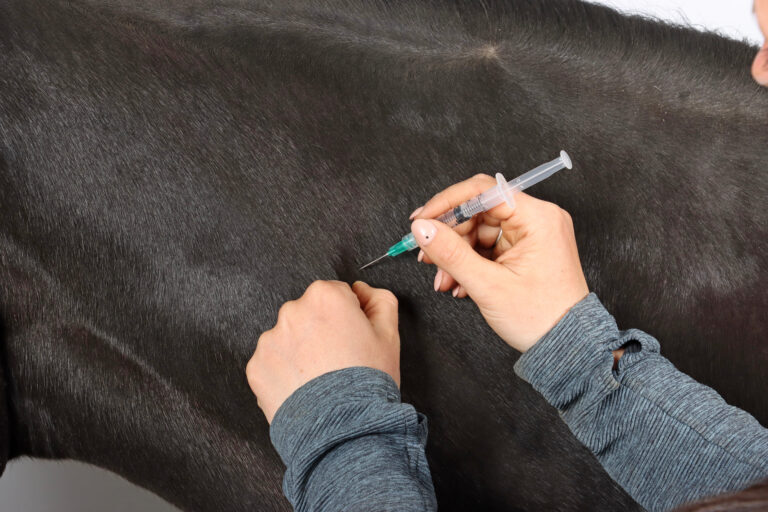
The mainstays of treating equine uveitis include topical steroids (i.e., neomycin-polymyxin-dexamethasone, prednisolone acetate), topical atropine, and systemic NSAIDs or steroids. Veterinarians should perform a diagnostic workup to investigate the underlying cause of the uveitis.
“It is critical to recheck horses with uveitis frequently to ensure the cornea is tolerating topical steroids well,” said Kelly Knickelbein, VMD, DACVO, Assistant Professor in the Section of Ophthalmology at the Cornell University College of Veterinary Medicine, during a Burst presentation at the 2024 AAEP Convention.
Intravitreal Gentamicin to Treat Equine Uveitis
After, and only after, the condition appears resolved should medications be slowly tapered prior to discontinuing. An appropriate treatment for certain cases might include low-dose preservative-free intravitreal gentamicin.
“For the right cases, this treatment can preserve vision, improve comfort, and likely prevent future flare-ups, thereby decreasing the need for daily medications,” relayed Knickelbein.
Intravitreal gentamicin is effective against Leptospira interrogans, the most common bacterial pathogen implicated in equine uveitis. Avoid toxicity by using only 4 milligrams.
“While the mechanism is not currently understood, it is also possible that intravitreal gentamicin has immunomodulatory properties and may be effective for horses that do not have Leptospiral-induced uveitis,” said Knickelbein.
Case selection is critical for a good outcome, she added.
Indications for Intravitreal Gentamicin
Indications for intravitreal gentamicin include Leptospiral-associated uveitis, uveitis that does not resolve with the first-line treatments outlined above, and recurrent uveitis. Intravitreal gentamicin is not a first-line treatment due to its potential toxic effects. Signs of intravitreal gentamicin toxicity include rapid development of cataracts (or worsening of existing cataracts) and retinal degeneration. The latter is less common than the former but leaves the horse irreversibly blind.
Knickelbein advised against using this dose of intravitreal gentamicin to manage secondary glaucoma. In fact, this treatment can exacerbate the increased pressure and discomfort. Finally, do not administer intravitreal gentamicin into both eyes on the same day, even if the disease is bilateral. Toxic effects in both eyes could leave the patient blind, so stage the procedures by at least four to six weeks for bilateral cases.
Related Reading
- Tips for Enucleating Horses in the Field
- Successful Subpalpebral Lavage Placement in Horses
- Prepurchase Ophthalmic Examinations: What Do You Need?
Stay in the know! Sign up for EquiManagement’s FREE weekly newsletters to get the latest equine research, disease alerts, and vet practice updates delivered straight to your inbox.




